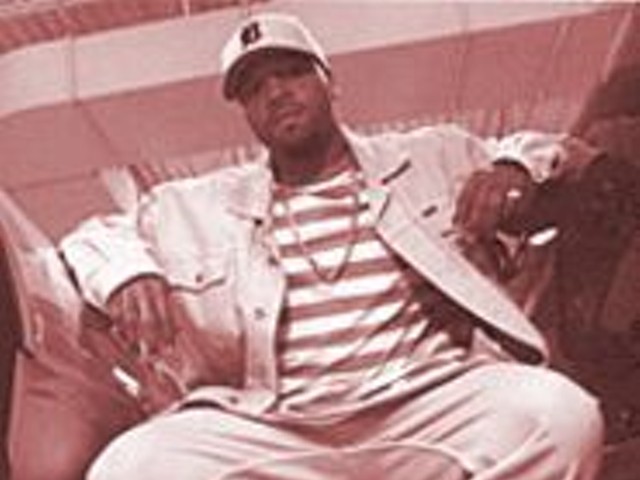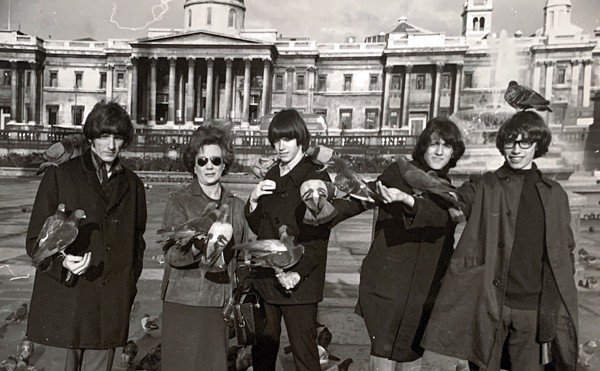The author's own introduction to these off-the-commercial-radar visionaries occurred in 1979, when he discovered Love's 1967 Forever Changes LP ("Its greatness was an indication that there was far more terrific music out there awaiting discovery than I ever knew existed"). Unterberger chose to focus on those artists that he felt "passionately curious about," and his choices reflect the eclectic nature of that decade's ever-changing musical spectrum. With a forward by Paul Kantner, who praises "the path less traveled" of the musical visionaries found on the pages that follow, Urban Spacemen relies heavily on the author's first-person interviews, which find some of his subjects freely discussing their past work whereas others are slightly more reluctant. But Unterberger, always careful not to offend, doesn't press his recalcitrant subjects when they get vague on the details. Each profile includes Unterberger's richly descriptive commentary of his subjects' musical output and ends with a list of recommended recordings. (Just one gripe: It would have been better if the old photos included in the book had been accompanied by some updated ones.)
The music business's apparent indifference to making stars of these artists didn't seem to matter to many of the musicians, whose creative instincts took precedence over commercial aspirations. That includes London's the Pretty Things, who played blues and R&B-style rock "with a savage power second to none in the mid-1960s." You can't help but wonder whether guitarist Dick Taylor's assertion that "commercial success was never particularly on our agenda" isn't a way to ease his pain over the band's failure to take advantage of the British Invasion by touring the States in the '60s (a baffling decision made by the group's co-manager).
The Electric Prunes, on the other hand, hit commercial paydirt on one of the first psychedelic hits ever, 1967's "I Had Too Much to Dream (Last Night)," yet theirs is a tale of frustrated artistic ambitions. Thwarted by music execs who didn't permit them to record much of their own material or even select their own songs, the Prunes nevertheless managed to display a real knack for studio trickery and special effects.
Unterberger's inclusion of Bobby Fuller (who scored big with 1966's "I Fought the Law") is due to the immensely ambitious Texan's "dedication to artistic expression equal to that of any of the more avant-garde musicians in this volume." With his teen-idol good looks and Buddy Holly fixation, Fuller was on his way to finding his own sound before his gruesome death at age 23, attributed to asphyxia resulting from inhalation of gasoline (inexplicably ruled an accident, despite the mutilated condition of his body). The author lauds Fuller's DIY ethic -- he built his own studio, released his own records and was an engineer and producer with a growing desire to concentrate on recording rather than touring -- unusual for the time.
One of Unterberger's more wary -- and interesting -- subjects is Mike Brown, keyboardist and composer for the Left Banke ("Walk Away Renee," "Pretty Ballerina"), who becomes uncomfortable discussing his musical past. Despite his deft melding of pop and classical forms, Brown has been heard from little since the '70s; he remains a prolific writer who has simply chosen not to release his work and doesn't seem particularly interested in discussing the reason. (Brown's contempt for what he calls the "impersonal and aesthetically sterile machinations of today's music industry" offers a good clue.) Brown, who bristles at the very notion of changing his music to meet commercial demands, calls the idea of someone trying to alter his music "really sick" (though he's currently writing a solo instrumental project that he hopes will garner him a cult following) and remains in thrall of the transformative power of a great tune. "All these good songs, they take you somewhere," he says. "If it takes you to the subway station, it's not the greatest thing. But if it takes you somewhere higher, it's a good thing."
It may have been their own nationality that kept the Mexican-American band Thee Midniters from achieving any real success outside their native East LA. Unterberger calls them "the best Latin rock band of the 1960s" because their dynamic rock-soul confections contained elements of psychedelic music and Mexican-style boleros. Bassist Jimmy Espinoza describes to the author the frustration of being "put in the Latin bag," stressing that "the '60s were integrated, the whole peace, love, black, white, brown, we're all the same -- that's who we were."
Unterberger cites folk-rock pioneer Dino Valenti's own personality as the main factor that doomed his chances of achieving a big commercial breakthrough. With an "inimitable talent for alienating people" (ironically, Valenti wrote the peace-and-love anthem "Get Together," popularized by the Youngbloods), Valenti's wildly strummed guitar and intense singing style conveyed a solid rock & roll attitude, yet he never succeeded in getting into a big rock group when the folk-rock sound exploded. It didn't help that Valenti's refusal to listen to anyone and his distaste for the recording process and publicity resulted in a series of missed opportunities.
Unterberger doesn't overlook the field of rock satire either, and he includes a profile of the Fugs, whose radical, left-leaning, taboo-smashing lyrics, with their celebrations of sex and drugs and use of profane language, found them battling the forces of censorship (and the FBI to boot). Not only did the group genuinely believe in a forthcoming revolution, its members are still espousing radical changes. Says lead agitator Tuli Kupferberg: "We haven't retreated from 1968. Almost everything we believed in is correct." The Fugs remain proud of their achievements and their unconventional way of doing things. "We didn't see the formalities," says Kupferberg, "that other people might have seen as being necessary to do something in the arts that we wanted to do."
Reclusive folk-rock singer Fred Neil is the only living musician not interviewed here. Because his work predated the singer/songwriter era, what the author calls Neil's "near classic" mid-'60s records were not big sellers (though he did pen the Nilsson hit "Everybody's Talkin'"). Neil, who plainly has no interest in discussing his work, strikes the author as being indifferent to the very possibility of stardom: "It's as if he has decided to live the easygoing indifference to worldly cares and concerns espoused in so many of his compositions, rather than simply sing about it."
Urban Spacemen also includes a CD featuring some of the artists profiled in these pages: Richard and Mimi Fariña's spooky folk number "Reno, Nevada," the cavernous sound of the Fugs' "Kill for Peace," a live version of the Electric Prunes' "I Had Too Much to Dream (Last Night)" (proof that the band's sonic experiments could be reproduced onstage), Thee Midniters' raucous "Jump, Jive and Harmonize," the Bobby Fuller Four's tuneful, harmony-drenched "Never to Be Forgotten" and the Poets' densely hypnotic "Some Things I Can't Forget."
The total effect of the CD and Unterberger's enthusiastic descriptions throughout provide all the inspiration anyone needs to begin a musical treasure hunt.





